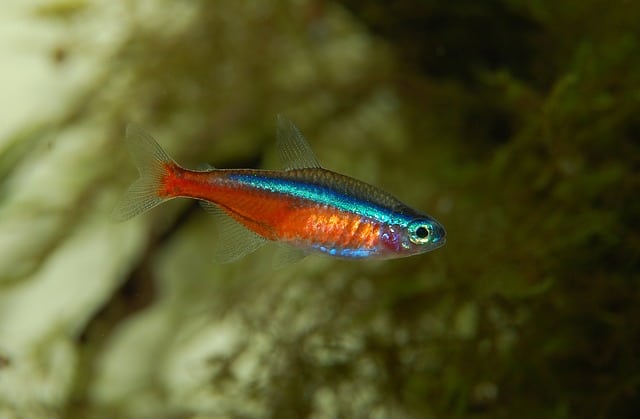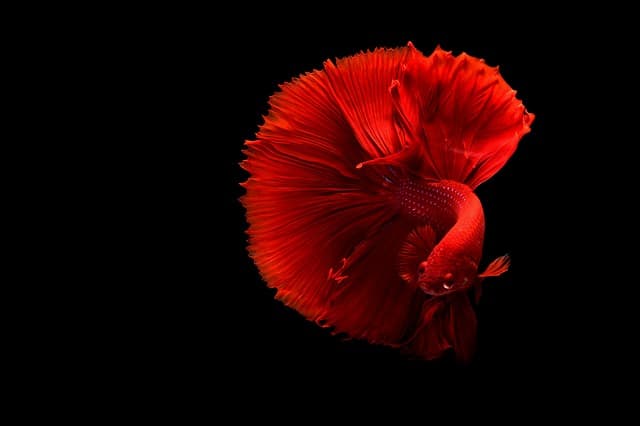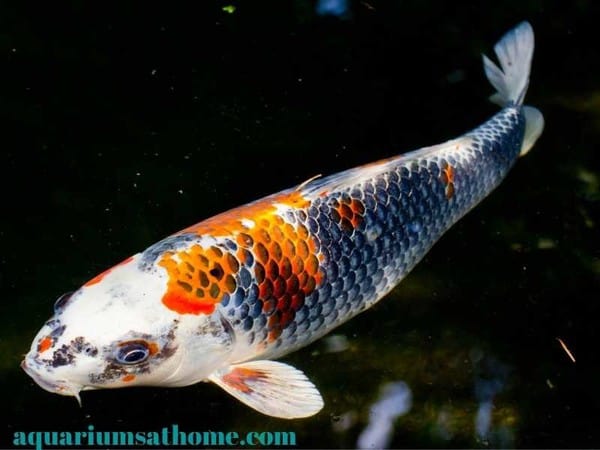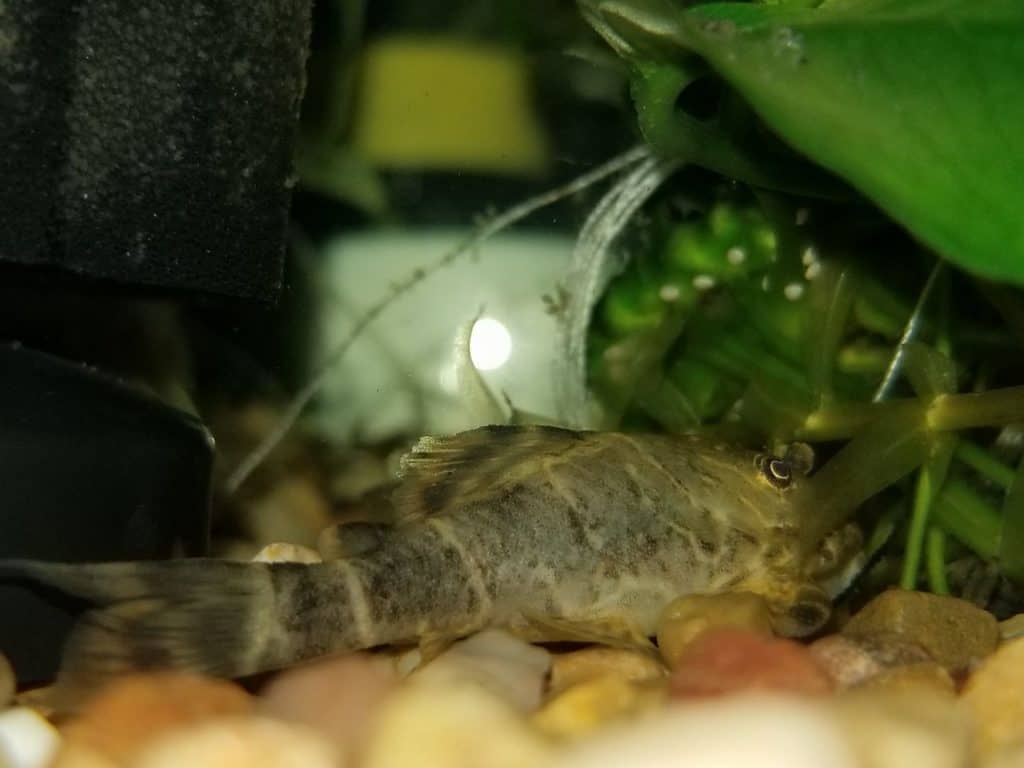African cichlids are diggers! No matter what you do, these fish will disturb substrate, uproot plants, and move rocks in their tanks. This behavior can be frustrating for aquarium hobbyists who keep cichlids – despite it being both typical and natural for this species. So, how do you stop cichlids from digging? The answer is…
African cichlids dig or sift through sand and gravel for 5 reasons: to create a hiding place; to signify spawning; to make a home for future offspring; to mark their territory; and to uncover food. Though it’s difficult to stop this behavior completely, you can limit it by burying rocks under the substrate in the areas where the fish like to dig or simply not using substrate at all in the tank.
Now that you know it’s next to impossible to stop cichlids in captivity from digging, let’s explore this topic further. In this article, I’ll explain why they sift through sand and move gravel around in their aquarium, how to reduce stress and limit aggression which often contributes to this behavior, and how to set-up your tank properly to ensure this action is kept to a minimum.
Now, if you’re ready to learn more about cichlid fish and how to prevent them from overly disrupting their aquatic surroundings, then let’s begin!
Why Does My Cichlid Dig Holes?
Cichlids dig holes in sand or gravel for the following 5 reasons:
- To escape larger, more aggressive fish.
- To prepare for reproduction.
- To make ready a home for offspring.
- To mark their territory.
- To reveal hidden food.
It’s important to note that this behavior is inherent to this species, especially those of the African variety. There’s really no way to stop it, just ways to prevent or reduce it. Not using substrate at all is only sure-fire solution. Another suggestion is to bury rocks or other aquarium ornaments under the sand or gravel in the spots where cichlid typically dig.
Why is My Cichlid Moving the Gravel?
Cichlids move gravel in search of food. By displacing the substrate, they can uncover extra or uneaten edibles that have settled along the bottom. Males will often move gravel as part of their courting ritual to attract females prior to spawning. After breeding, females will move gravel to create a safe place for eggs to hatch.
How Do I Calm My Cichlid Down?
One of the reasons cichlids will dig holes in the substrate of an aquarium is out aggression or frustration, especially when they feel their home is being invaded. African cichlids tend to be the most hostile and need a large tank to ensure they’re not competing for space. As well, don’t keep multiple males in the same tank, otherwise they’ll fight each other for territory and/or dominance over the females.
Why Do Cichlids Rub Against Sand?
African cichlids are known for rubbing themselves against sand or gravel. Most likely it’s a sign that they’re getting to breed or it could be the result of a parasite. This behavior known as flashing isn’t of concern, if it’s typical or natural for your fish. However, if this conduct continues and your fish seems to be in distress, it may be the result of too much ammonia in the water or extreme changes in pH levels.
Why Do Cichlids Spit Sand?
African cichlids will often sift through and spit out sand in search of food or to rearrange their physical surroundings to better suit their needs. This can be problematic if the behavior stirs up the substrate enough that displaces the beneficial bacteria in the tank. Beneficial bacteria is vital to the health of an aquarium – it helps break down organic waste and keeps the water clear.
How Do I Know if My Cichlids are Mating?
Digging holes and moving substrate are behaviors that signify mating. This is natural for African cichlids and is of no cause for concern. However, if you’re worried about the ecological balance of the tank being affected by this, then you can try to bury rocks under the substrate in the areas of the tank where the cichlids like to dig.
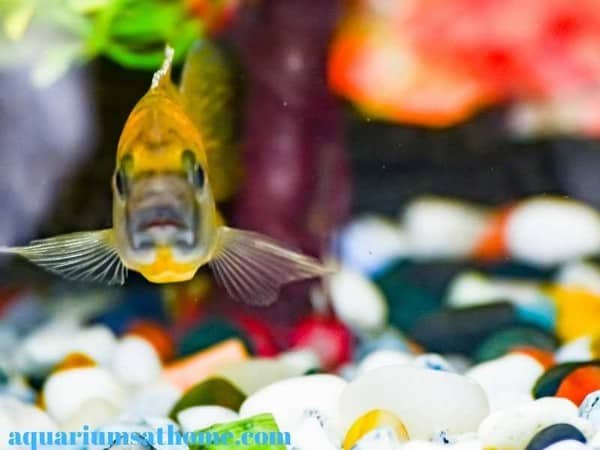
How to Properly Setup a Cichlid Tank to Prevent Digging
Setting up a cichlid tank isn’t hard – you just need to be aware of certain behaviors that may determine what you should or shouldn’t have in the tank. As African cichlids (in particular) are prone to digging holes in the sand and gravel at the bottom of their aquarium, here are some suggestions for creating the perfect cichlid tank:
- Choose the largest tank possible – the bigger the aquarium, the better when it comes to cichlids – nothing smaller than 30 gallons although 50 gallons or more is what I’d personally suggest.
- Treat the water with a dechlorinating agent and ensure the pH suitable for the species of cichlid fish you have.
- Don’t use substrate all in the tank – if you must have substrate, then opt for crushed coral or oyster shells instead.
- If you intend to use gravel or sand in the tank, then use very fine-grained substrate to prevent cichlids from scratching their scales.
- Add sponge media or activated charcoal to your filter – this will encourage the growth of beneficial bacteria –bio filter media is also great for adding a location for beneficial bacteria to grow (check them out on Amazon).
- Invest in a larger filter to mimic a slow current or add an air pump to an existing filter to create a stronger current – depending on the species of cichlid fish you have.
- Place rocks throughout the tank as cichlids like to hideaway in the gaps between them – use aquarium-safe glue to secure the rocks in place so they don’t topple over or get displaced.
- Bury some larger rocks under the substrate as well to prevent cichlids from digging holes in it.
- Ensure the tank is equipped with a heater – cichlids are tropical fish and prefer warmer water – anywhere from 72 to 82 degrees Fahrenheit depending on the species.
- Add an aquarium light – don’t use under-gravel lights as cichlids may damage them while digging in the substrate.
- Since live plants get uprooted or devoured in an African cichlid tank, they’re not recommended – however, if you must have them, then consider the hardy types like anubias and java fern.
- Add tankmates of similar size and temperament – make sure not to overcrowd the aquarium as this will lead to stress and aggression among cichlids.
Where to Place Rocks in a Cichlid Tank?
Rocks are essential to cichlid tanks. The fish use them to mark out territory and as an area of cover or safety. Rocks are also helpful in preventing cichlids from digging up the substrate. Place the larger rocks near the back and along the sides so they don’t obstruct your view. Keep the middle rock-free so cichlids have plenty of open space to swim about.
Put medium-sized rocks directly on top of the substrate so there’s less free sand to dig in. Bury a few smaller rocks underneath the substrate in the areas where the cichlids like to dig. The fact remains that digging is inherent to cichlids in the wild. As a true aquarium hobbyist, you should allow for this natural and instinctive behavior to occur at some level – even in captivity.
Conclusion
To summarize, African cichlids like to dig or sift through sand and gravel along the bottom of an aquarium. This behavior can be problematic as it disrupts the aquatic environment by stirring up the beneficial bacteria in the substrate. This, in turn, alters the water parameters and upsets the ecological balance in the tank. The only way to stop it is to omit the substrate entirely.
I trust this article has answered your questions regarding cichlids and their penchant for hole digging. Thanks for reading and best of luck attaining all your hobbyist goals.
Related Posts
How to Bring Out Color in Cichlids
Why Do Aquarium Fish Eat Rocks?
Why Do Fish Rub Themselves Against Rocks?
How to Stop Cichlid Aggression?
German Blue Rams versus Bolivian Rams – What’s the Difference?



